Comprehensive Analysis of Leadership Styles, Advantages and Theories
VerifiedAdded on 2023/04/17
|5
|365
|288
Essay
AI Summary
This essay provides an overview of leadership, defining it as a process of influence aimed at achieving organizational goals. It differentiates between formal and informal leadership, outlining how leaders can exert authority formally or through personal influence. Various leadership styles are discussed, including autocratic, democratic, laissez-faire, persuasive, and consultative, along with their respective advantages and disadvantages. The essay also explores prominent leadership theories such as trait, behavioral, contingency, and situational theories, and touches upon entrepreneurial and transactional leadership. The document concludes with a list of references.
1 out of 5
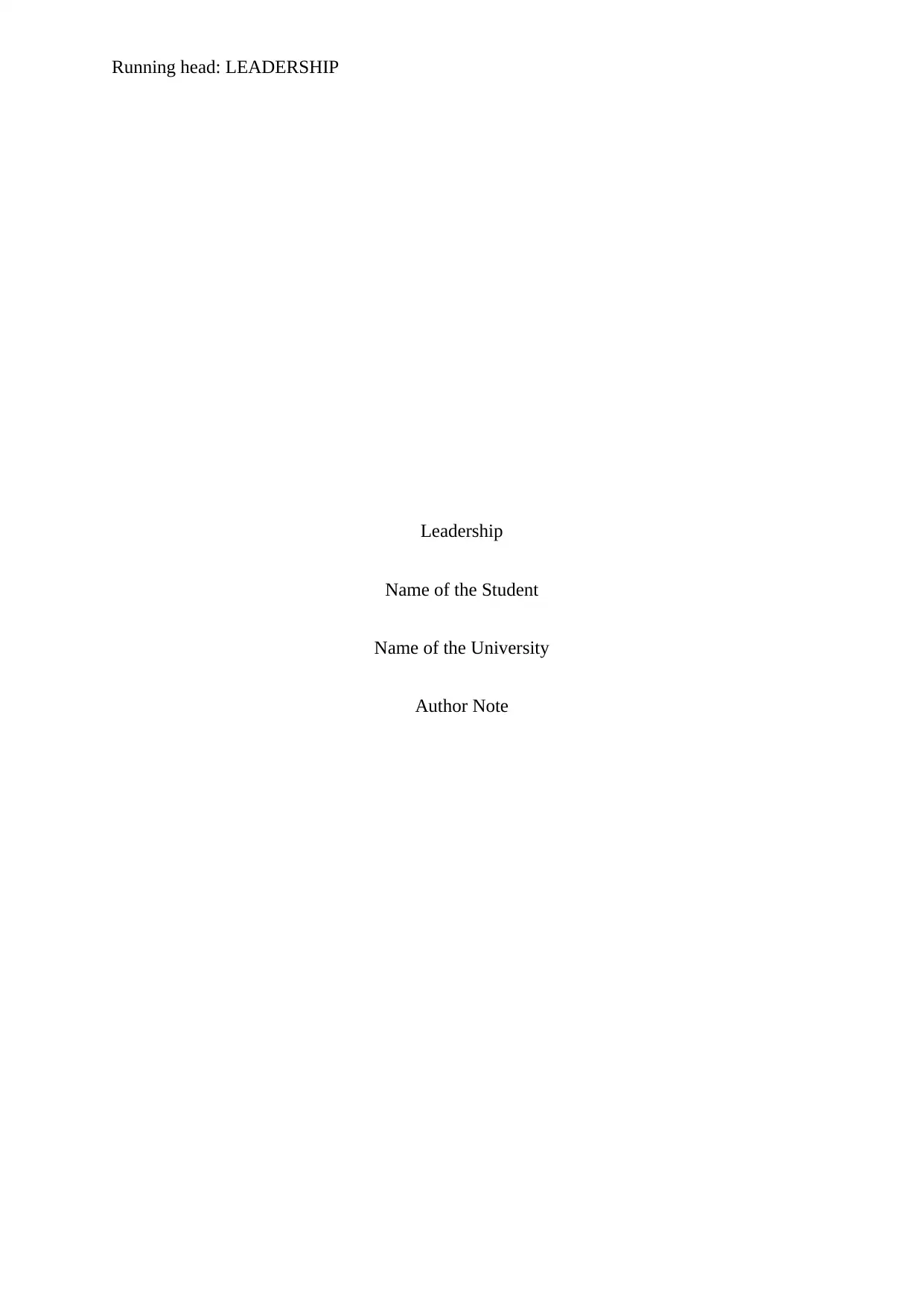
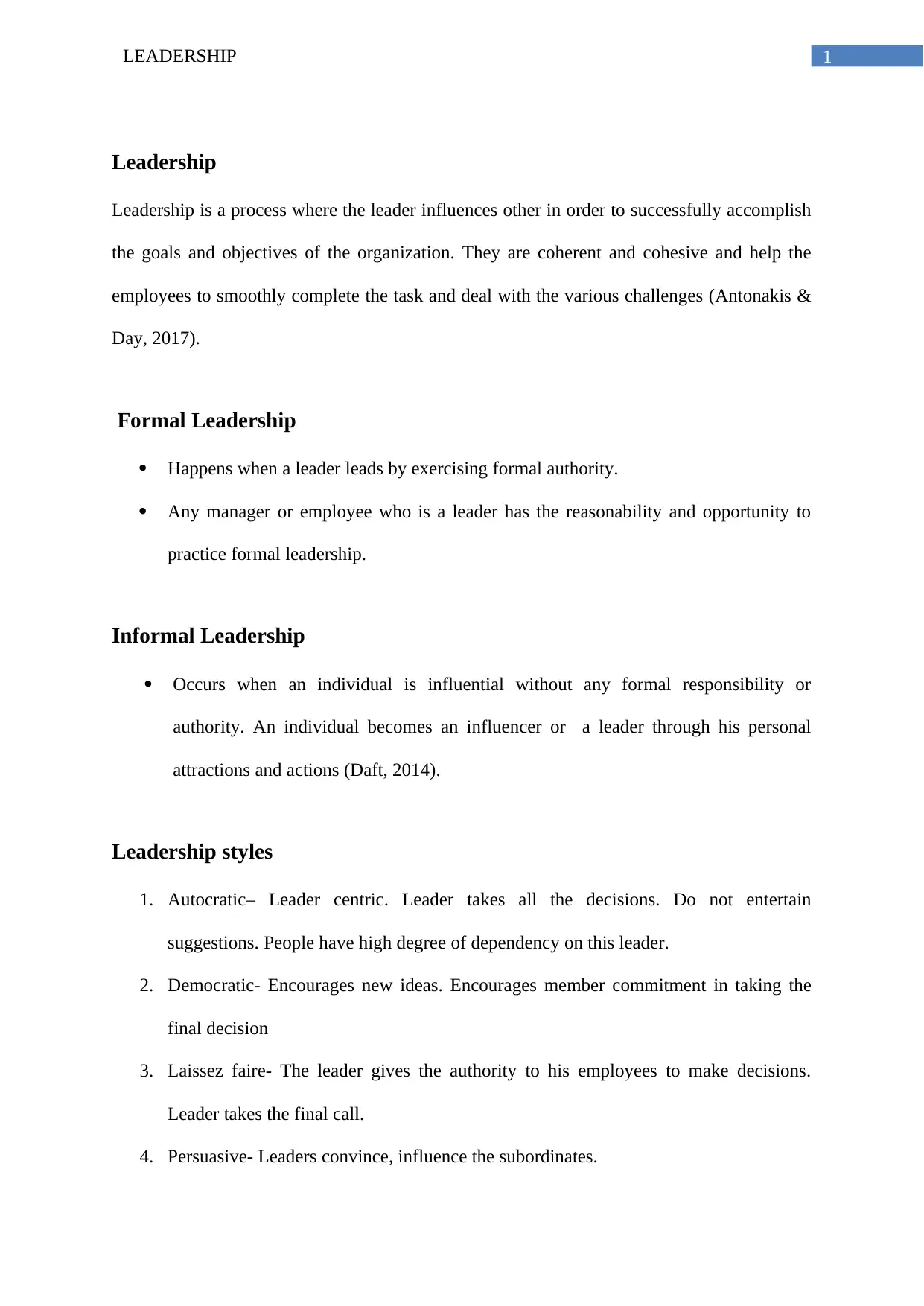
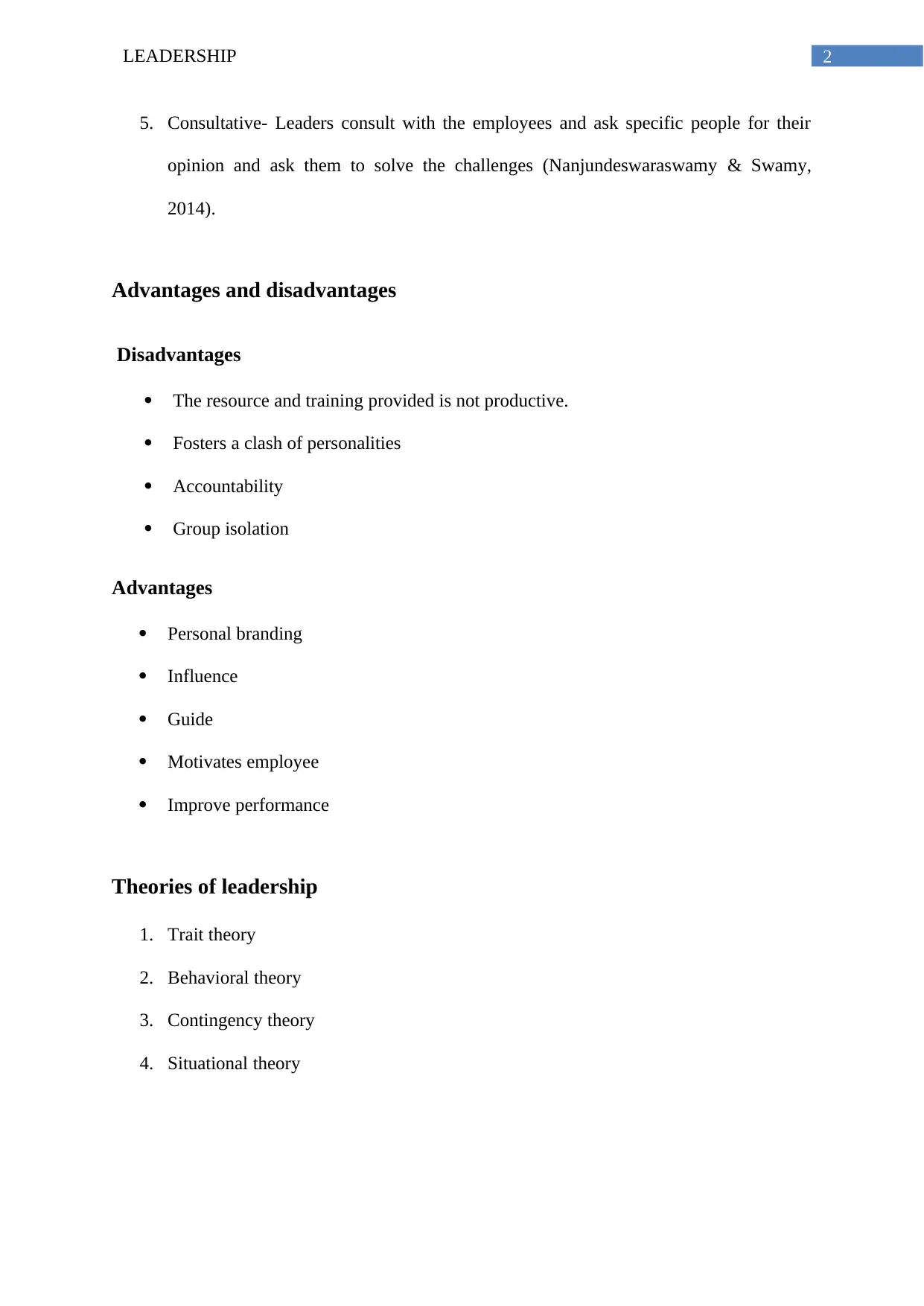

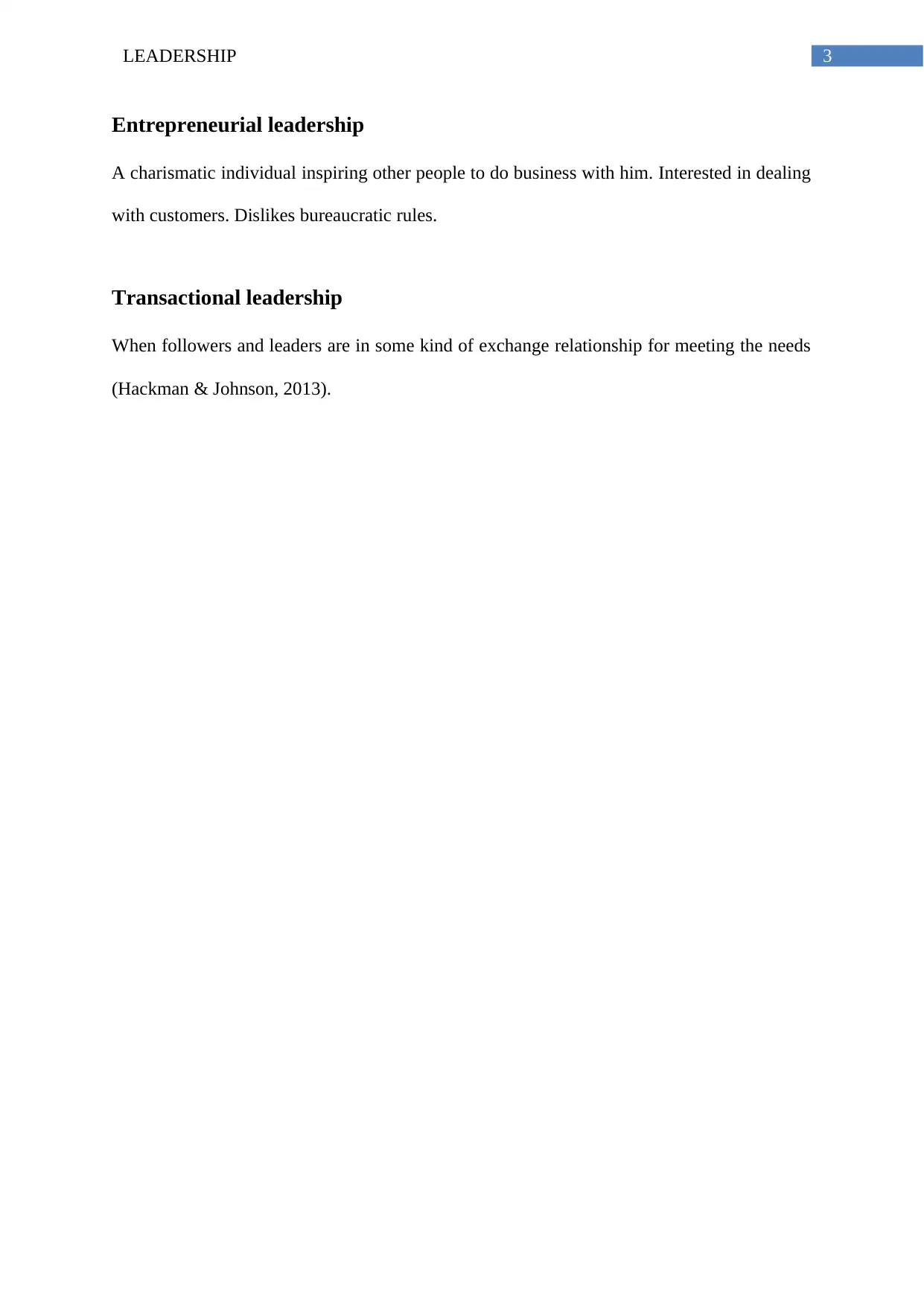
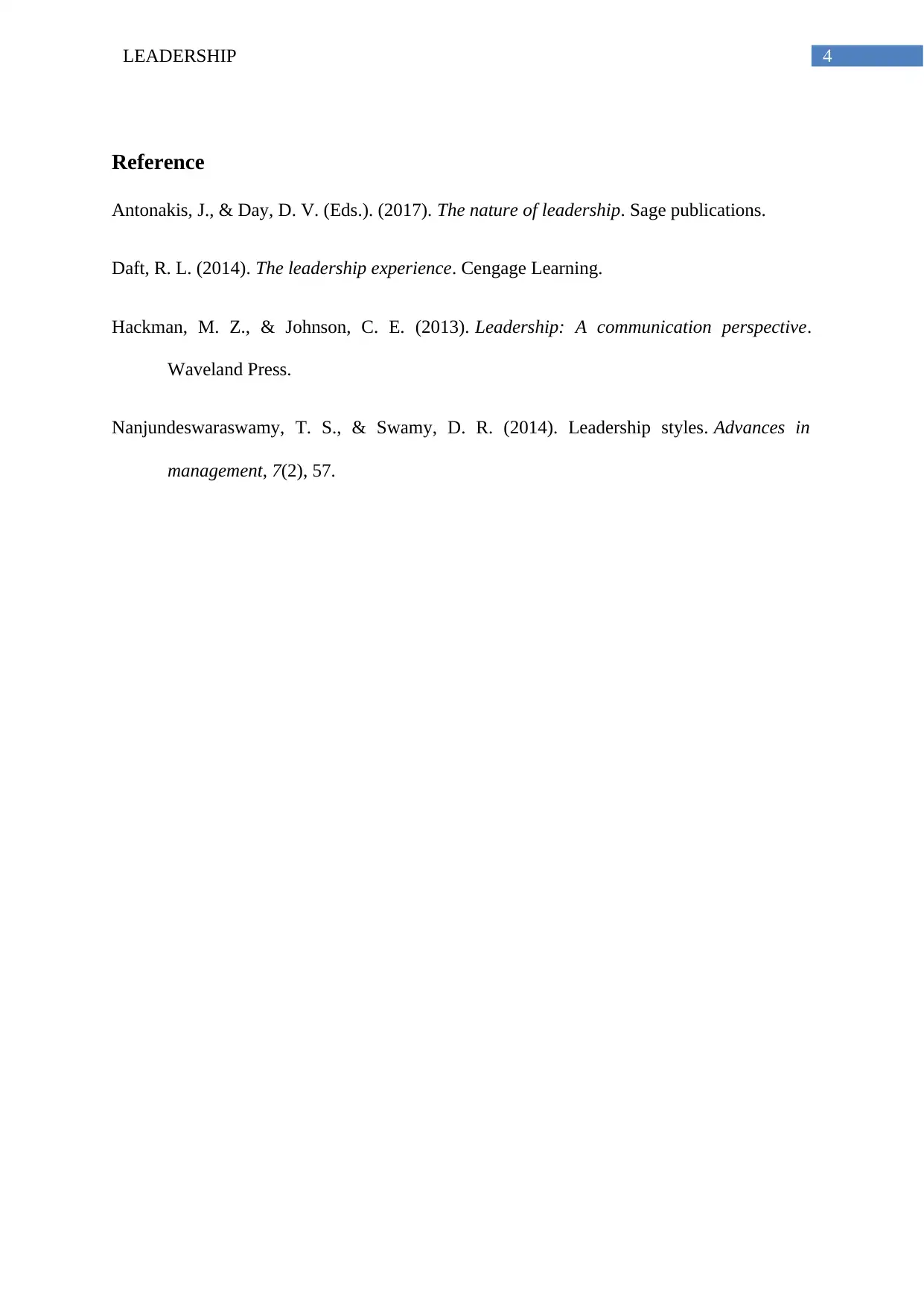





![[object Object]](/_next/static/media/star-bottom.7253800d.svg)